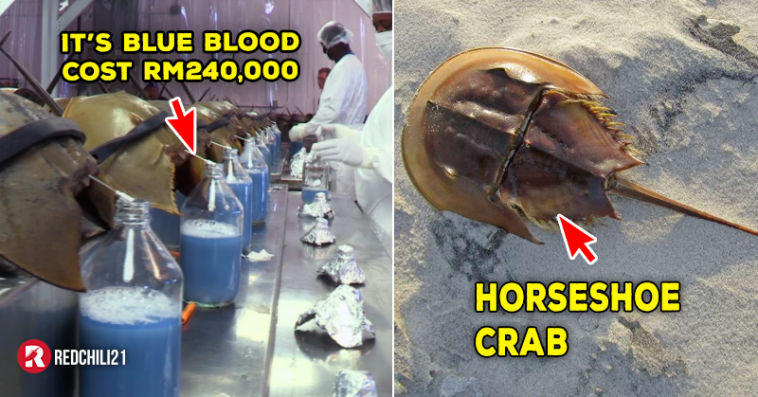Despite exceptions, the majority of blood from animals is red. Exception? Yes, a blue blood i mean and it’s from the Horseshoe crab! Have you seen this blue blood or even a Horseshoe crab before?
Why Is It Blue?
This blue blood is so bizarre and exclusive, it can comes up to $60,000 ( RM 240,000 )per gallon! The blue colour comes from the present of copper in haemocyanin which carries the oxygen through their blood. Hence, that is what makes their blood blue.
Why We Need The Blue Blood?
What makes people need their blood is not because of the unique colour it has. It what it does. The blood contains a special clotting agent which helps in concoction called Limulus Amebocyte Lysate (LAL). LAL plays a crucial role in determining if a new vaccine or medical tools is safe from any contamination.
That is why, according to National Geographic, this magical blue blood is a key in creating Covid-19 vaccine. The scientist just need to drop a tiny amount of the blood into the vaccine or on the medical tools. Then if there is any bad bacteria in it, it will turns into a gel form when it comes into contact. However, LAL does not kill the bacteria.
How Do We Get It?
When the Horseshoe crab is captured, about 30% of their blood are drained. However, almost 30% of them can’t survive through the process. The rest who survived are then returned to the water.
What Happen To The Survivors?
Even if they survived through the blood taking process, they are not guaranteed to live. According to Win Watson, Professor of Zoology from UNH, he stated that, approximately 10% to 25% of the Horseshoe crab will become weak and eventually die within the first couple of days after bleeding due to the blood draining process. However, if they are able to survive in the first two weeks, get back to their habitat, they will most probably be fine and live.
The blue blood may seems magical and rare as it helps the medical research in finding cure to many diseases, however, the population of Horseshoe crab is in danger not just for its blood but also as an exotic food. We need to find an alternatives as soon as possible before we ran out this millions year old species.
Info via Youtube | National Geograpic
